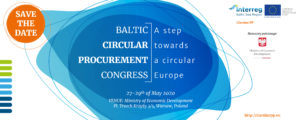We invite everyone to familiarize yourself with the another case study created within the Circular Public Procurement.
Accus is a company specialized in providing signage (with or without illumination) for branding, way-finding and overall visual communication in buildings and facilities. Their business model include selling or renting of individual signage. Recently, they have begun collaborating with facility owners and operators in order to supply signage “as a service” providing continuous maintenance and adjustment of all signage requirements in the facility.
Circularity of business model:
Accus reuses resource flows related to manufacturing of signage including plastics and electrical components, mostly by designing products in a modular way so these can be maintained and adjusted to changing environments. In addition they take back signage from their customers and reuse them in other projects and reduce material flows by incorporating recycled materials in the manufacturing process of their products.
Furthermore, they can keep ownership of their products. This means they essentially provide signage as a service. In this arrangement, facility owners are their customers and tenants of buildings become users of the signs.
Other benefits:
The business model of Accus allows their customers to meet their needs of signage and visual communication with a reduced environmental impact compared to conventional disposable products. To Accus, their circular product design allows them to use their products for several cycles, not only with one customer and eventually recycle their products once they cannot be re-used. Signs, particularly those used on the outside of buildings, have a fixed position and are relatively on inaccessible locations, therefore, this facilitates keeping track of their own products and potentially recovering them when their users no longer need tchem.
Main Barriers:
Signs, specifically the branding ones, require a relatively high degree of aesthetics and uniqueness in their design. Sometimes this can be at odds with circular design, modularity and re-usability. Furthermore, implementing innovative designs that include re-used materials, in addition, to providing a constant maintenance service and adjustment, involves higher costs. Therefore, it is difficult to compete in bidding processes against suppliers who focus on cheap disposable materials, when price is the only criteria for selection.



